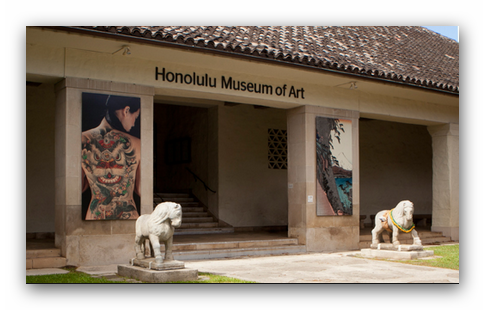Jun 22 2017 - Aug 20 2017
Honolulu, HI
The introduction of photography was a pivotal moment in the modernization of Japanese art at the end of the 19th century. The size and appearance of photographs resembled traditional Japanese woodblock prints in many ways, but otherwise, these two media were fundamentally different.
“The Japanese prints and paintings known as ukiyo-e…richly exploited the potential of color, shape and line. But deep dimensional space and the gradation of light and shadow, in short, the ‘truth’ captured in a photograph, produced a compelling kind of image,” wrote Robert Stearns in Photography and Beyond in Japan: Space, Time and Memory (1995).
In an attempt to replicate the vibrancy of polychromatic woodblock prints (nishiki-e), some of the early pioneers of Japanese photography, including Felice Beato (1832–1909) and Charles Wirgman (1832–1891), both foreigners living in Yokohama, popularized the production of albumen prints.
This rotation features newly accessioned works from the collection of James H. Soong.
Credit: Exhibition overview from museum website
Exhibition Venues & Dates
Jun 22 2017 - Aug 20 2017
Honolulu, HI
